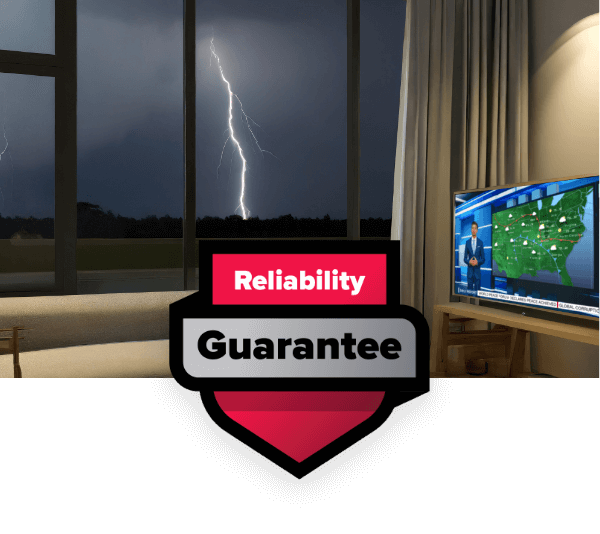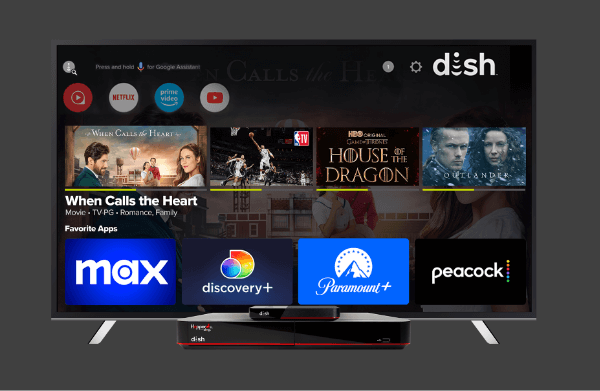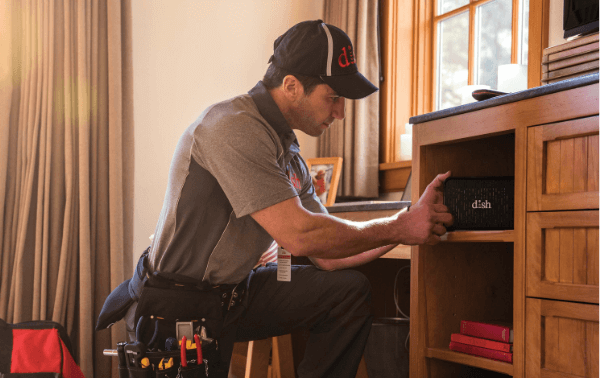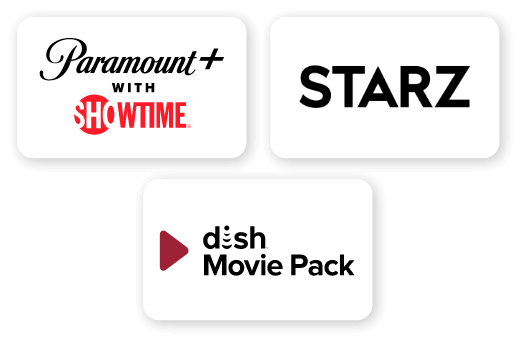Best Rural Internet Solutions 2025
Table of Contents
Living in the countryside offers peace, space, and natural beauty that city dwellers can only dream about. But rural life comes with its challenges, and reliable internet access remains one of the biggest. Whether running a business from home, helping kids with homework, streaming your favorite shows, or simply staying connected with loved ones, good internet is no longer a luxury but a necessity.
You’re not alone if you’ve struggled with slow connections, frequent outages, or limited options. Millions of rural Americans face similar challenges every day. The good news? More solutions exist now than ever before, and the technology keeps improving.
This comprehensive guide includes everything you need to know about getting fast, reliable internet in rural areas in 2025. We’ll explore all available options, compare costs and speeds, and help you find the perfect solution for your location and needs.
Understanding the Rural Internet Challenge
Before diving into solutions, let’s understand why rural internet access differs from urban service:
The Distance Problem
In cities, internet providers can connect thousands of customers with minimal infrastructure. In rural areas, the same equipment might serve just a handful of homes spread across miles of terrain, making building networks more expensive per customer.
Companies naturally prioritize areas with more potential customers, leaving rural regions with fewer options and older technology. This “digital divide" persists despite various government initiatives to bridge the gap.
Physical Barriers
Mountains, forests, and other natural landscapes can block signals or make laying cables difficult and expensive. Weather conditions like heavy rain, snow, or strong winds can also severely affect wireless connections in rural settings.
Limited Competition
Urban areas often have multiple providers competing for customers, driving prices down and service quality up. Rural areas might have only one or two options, giving providers little incentive to improve service or lower prices.
Now that we understand the challenges, let’s explore the solutions available.
Satellite Internet
Satellite internet has transformed rural connectivity in recent years. Unlike traditional services that require physical infrastructure nearby, satellite beams internet directly to your home from space.
Traditional Satellite Providers
Companies like HughesNet and Viasat have served rural communities for years. They offer nationwide coverage but come with some limitations:
- Speeds: Typically 25-100 Mbps download speeds
- Data caps: Most plans include monthly data allowances
- Latency: 500-700 milliseconds (noticeable delay for gaming or video calls)
- Weather sensitivity: Service can degrade during storms
- Cost: $50-150 monthly, plus equipment and installation fees
Despite these drawbacks, traditional satellite remains a solid option for areas with no alternatives.
Low Earth Orbit (LEO) Satellite Services
Low-Earth orbit satellite networks have been the game-changer in rural internet. Rather than using a few satellites in distant orbits, these systems deploy thousands of smaller satellites much closer to Earth.
SpaceX’s Starlink leads the LEO revolution with impressive performance:
- Speeds: 100-300 Mbps download speeds in most areas
- Latency: 20-40 milliseconds (comparable to wired connections)
- Reliability: Consistent service with minimal outages
- Availability: Now available nationwide with minimal waitlists
- Cost: Around $110 monthly plus a $599 equipment fee (sometimes discounted)
Starlink has become the go-to choice for many rural users who need reliable, high-speed connections for work or entertainment [1].
Amazon’s Project Kuiper and OneWeb represent growing competition in the LEO space:
- Project Kuiper began commercial service in late 2024, offering similar performance to Starlink at competitive prices
- OneWeb focuses primarily on business and government customers, but has expanded residential service in 2025 [2]
This competition has driven service quality and pricing improvements across the satellite internet market.
Fixed Wireless
Fixed wireless internet uses radio signals transmitted from towers to receivers at your home—no satellite or cables required. This technology has improved dramatically in recent years.
Traditional Fixed Wireless
Local Wireless Internet Service Providers (WISPs) operate in many rural communities:
- Speeds: 25-100 Mbps, with some providers offering faster service
- Reliability: Generally consistent but can be affected by line-of-sight issues
- Cost: $50-100 monthly plus installation
- Availability: Varies widely by location
To find local WISPs, enter your zip code here or ask neighbors about their internet solutions.
5G Fixed Wireless
Major carriers now offer home internet service using their 5G networks:
- T-Mobile Home Internet: Available in many rural areas served by T-Mobile’s network
- Verizon Home Internet: Expanding rapidly in rural markets
- AT&T Fixed Wireless: Available in select rural communities
These services typically offer:
- Speeds: 50-300 Mbps download
- Reliability: Generally good where signal strength is adequate
- Cost: $50-70 monthly with no equipment fees
- Simplicity: Self-installation with no technical knowledge required
5G home internet has become a compelling option, offering fiber-like speeds without new infrastructure.
DSL and Cable
While newer technologies grab headlines, traditional wired services remain essential in many rural areas.
DSL Internet
Digital Subscriber Line (DSL) delivers internet through existing phone lines:
- Speeds: 5-100 Mbps, depending on distance from the central office
- Reliability: Generally stable but degrades with distance
- Cost: $40-70 monthly
- Availability: Common in rural areas with telephone service
DSL speeds have improved in some regions through technologies like bonded DSL and VDSL, making it still relevant in 2025.
Cable Internet
Cable internet uses the same infrastructure as cable TV:
- Speeds: 100-1000 Mbps in areas with upgraded networks
- Reliability: Generally good, but can slow down during peak usage times
- Cost: $50-100+ monthly, depending on speed
- Availability: Limited to areas with cable TV infrastructure
Cable remains one of the best available options, offering a good balance of speed and price.
Fiber Internet
Fiber optic internet transmits data using light signals through thin glass fibers, offering unmatched performance:
- Speeds: 300-5000 Mbps (symmetrical upload and download)
- Reliability: Extremely stable with minimal outages
- Latency: Very low (ideal for gaming and video calls)
- Cost: $50-150 monthly
- Availability: Expanding in rural areas due to government funding
Rural Fiber Expansion
Thanks to federal initiatives like the Rural Digital Opportunity Fund (RDOF) and the Infrastructure Investment and Jobs Act, fiber networks are reaching more rural communities than ever before [3].
Local electric cooperatives have also become essential players in rural fiber deployment, leveraging their existing infrastructure and community connections to build networks in underserved areas.
Cellular Hotspots and Mobile Data
For ultimate flexibility or as a backup solution, cellular data options provide internet anywhere with cell coverage:
Dedicated Hotspot Devices
Major carriers offer portable hotspots that create WiFi networks using cellular data:
- Speeds: 10-100+ Mbps depending on network and signal
- Portability: Can be used anywhere with cellular coverage
- Data limits: Most plans cap monthly usage
- Cost: $20-80 monthly plus device cost
Phone Tethering
Most smartphones can share their internet connection with other devices:
- Convenience: No additional equipment needed
- Limitations: Can drain phone battery and may have stricter data limits
- Cost: May require additional fees depending on your cellular plan
Choosing the Right Solution
With so many options, how do you choose? Consider these factors:
Speed Requirements
Different activities require different speeds:
- Basic browsing and email: 5-25 Mbps
- HD video streaming: 25-50 Mbps
- Multiple users or 4K streaming: 50-100+ Mbps
- Working from home with video calls: 25-50 Mbps with good upload speeds
- Gaming: 25+ Mbps with low latency
Budget Considerations
Internet costs include:
- Monthly service fees: $40-150, depending on technology and speed
- Equipment costs: $0-600, depending on provider
- Installation fees: $0-200
- Contract requirements: Some providers offer discounts with 1-2 year commitments
Reliability Needs
If you work from home or run a business, reliability might outweigh pure speed:
- Uptime guarantees: Some business plans include service-level agreements
- Weather resistance: Consider how different technologies perform during storms
- Backup options: Having a secondary connection can provide peace of mind
Future-Proofing
Technology needs continue to grow:
- Bandwidth growth: The average household uses 40% more data each year
- Upgrade paths: Can your chosen solution scale as needs increase?
- Contract flexibility: Will you be locked in if better options become available?
Installation and Optimization Tips
Once you’ve chosen a solution, make the most of it:
Proper Equipment Placement
- Satellite dishes: Clear view of the sky in the appropriate direction
- Fixed wireless receivers: Mounted high with a clear line of sight to the tower
- Routers: Centrally located, away from interference sources
Home Network Optimization
- Updated equipment: Modern routers support faster speeds and better range
- Mesh networks: Extend coverage throughout larger homes
- Wired connections: Use Ethernet for stationary devices when possible
Regular Speed Testing
- Performance tracking: Test speeds regularly
- Documentation: Keep records if you need to dispute service issues
Find Internet Providers Near You
The rural internet landscape continues to improve rapidly. For now, the best approach is to research all available options in your location, potentially combining technologies to create a reliable solution that meets your needs and budget.
Enter your zip code here to find providers and plans in your area today!
Sources
[1] Starlink.com. “HIGH-SPEED INTERNET AROUND THE WORLD"
[2] Aboutamazon.com. “Project Kuiper"






 Call
Call 

 Access Your Account
Access Your Account